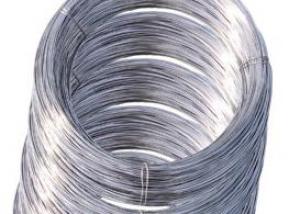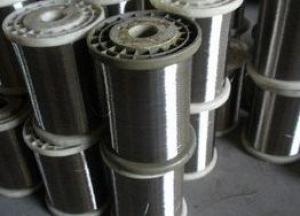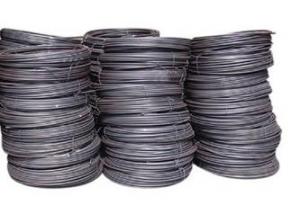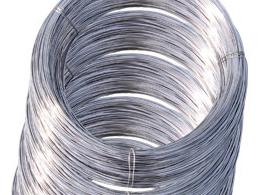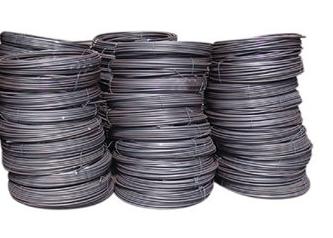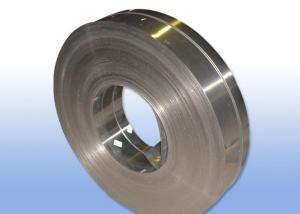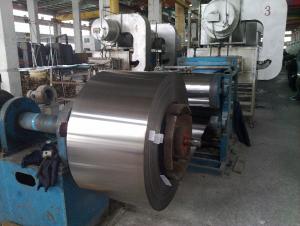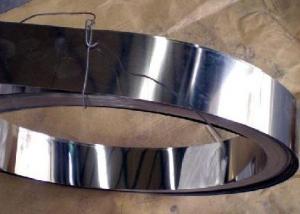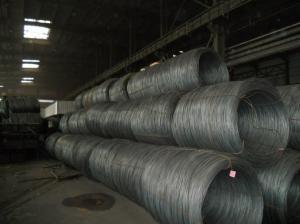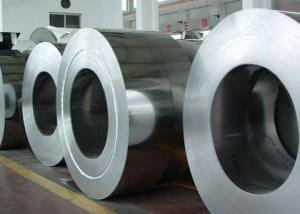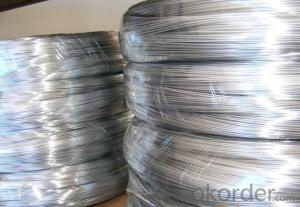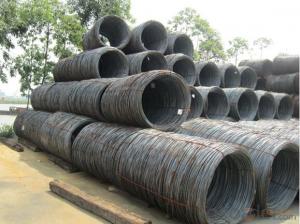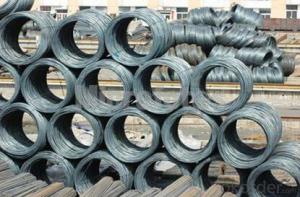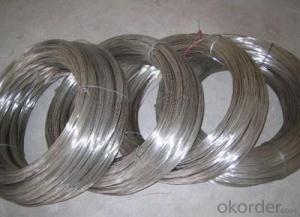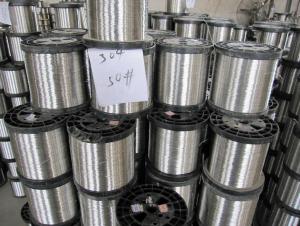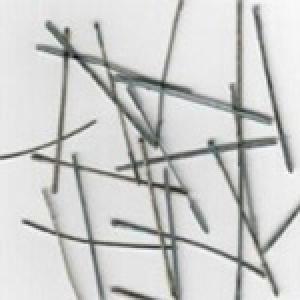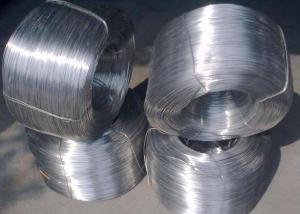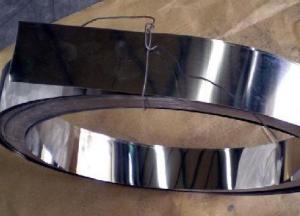Steel Wire Rod
- Loading Port:
- China Main Port
- Payment Terms:
- TT or LC
- Min Order Qty:
- 1 Ton m.t.
- Supply Capability:
- 2000 Tons Per Month m.t./month
OKorder Service Pledge
OKorder Financial Service
You Might Also Like
Stainless Steel Wire
1.Grade: SS 200,300,400 series
2.Dia: 0.1mm-100mm
3.Length:500m-2000m/Reel
4.Surface: Bright
5.Certificate: Fortune 500, SGS, ISO 9001:2008
6.Test: Salt Spray over200 hours
7.MOQ:500kg
8.Delivery: Within 20 days
9.Packing: Reel, wooden box or according to your requirement
10.Payment terms: China Main Port or CIF ANY PORT
11. Application: Tie wire, pins, lashing, forming wire, filters, gaskets, elevators, safety wire, shaped and flat wire, conveyors, jewelry, springs, brush welding, electrical, wire line, craft and many more applications.
|
Main Grades |
C % |
Si % |
S % |
P % |
Mn % |
Cr % |
Ni % |
Mo % |
Cu % |
|
S30400 |
<0.08 |
<0.75 |
<0.015 |
<0.045 |
<2 |
18.05-19 |
8.01--8.25 |
<0.6 | |
|
304H |
0.04-0.1 |
<0.75 |
<0.015 |
<0.045 |
<2 |
18.05-19 |
8.01--8.25 |
<0.5 | |
|
304Hc1 |
0.03-0.05 |
<0.75 |
<0.015 |
<0.045 |
<2 |
18.05-19 |
8.01-8.25 |
1.2-1.6 | |
|
304Hc |
0.03-0.05 |
<0.75 |
<0.015 |
<0.045 |
<2 |
18.05-19 |
8.01--8.25 |
2-3 | |
|
304Hc3 |
0.03-0.05 |
<0.75 |
<0.015 |
<0.045 |
<2 |
18.05-19 |
8.01--8.25 |
3-3.5 | |
|
304ES |
<0.08 |
<0.75 |
<0.015 |
<0.045 |
2-3 |
16.05-17 |
6.01-6.3 |
1.5-3 | |
|
304M2 |
0.05-0.08 |
<0.75 |
<0.015 |
<0.045 |
2-3 |
18-18.5 |
7-8.1 |
<0.6 | |
|
304M3 |
0.05-0.08 |
<0.75 |
<0.015 |
<0.045 |
2-3 |
18-18.5 |
8.01-8.25 |
<0.6 | |
|
304L |
<0.035 |
<0.75 |
<0.015 |
<0.045 |
<2 |
18.05-19 |
8.01--8.25 |
<0.6 | |
|
321 |
0.04-0.08 |
<0.75 |
<0.015 |
<0.045 |
<2 |
17-18 |
8.01--8.25 |
||
|
316L |
<0.035 |
<0.75 |
<0.015 |
<0.045 |
<2 |
16.05-17 |
10.01--10.35 |
2.01-2.2 |
<1 |
|
316 |
0.04-0.08 |
<0.75 |
<0.015 |
<0.045 |
<2 |
16.05-17 |
10.01--10.35 |
2.01-2.2 |
<1 |
|
316LCu |
<0.035 |
<0.75 |
<0.05 |
<0.045 |
<2 |
16-17 |
10-10.5 |
2-2.25 |
|
|
ER316L |
<0.04 |
0.65 |
<0.03 |
<0.04 |
1.0-2.5 |
18-20 |
11.1-12 |
||
|
201CU |
<0.08 |
<0.75 |
<0.015 |
<0.045 |
8-9.5 |
13.05-14 |
4.01-4.25 |
2-3 | |
|
D667 |
<0.08 |
<0.75 |
<0.015 |
<0.045 |
13-14 |
13-14 |
0.7-1.5 |
1.5-3 | |
|
D665B |
<0.08 |
<0.75 |
<0.015 |
<0.045 |
14-16 |
10.05-11 |
<1.2 |
0.5--1.5 | |
|
202B |
0.1-0.15 |
<0.75 |
<0.015 |
<0.045 |
9-10 |
17.05-18 |
4.5-5 |
||
|
D669 |
0.08-1.0 |
<0.75 |
<0.015 |
<0.045 |
14.5-16 |
11-12 |
<1.2 |
0.5-1.5 | |
|
200CU |
<0.08 |
<0.75 |
<0.015 |
<0.045 |
11-12 |
13-14 |
1-2 |
1.5-2.5 |
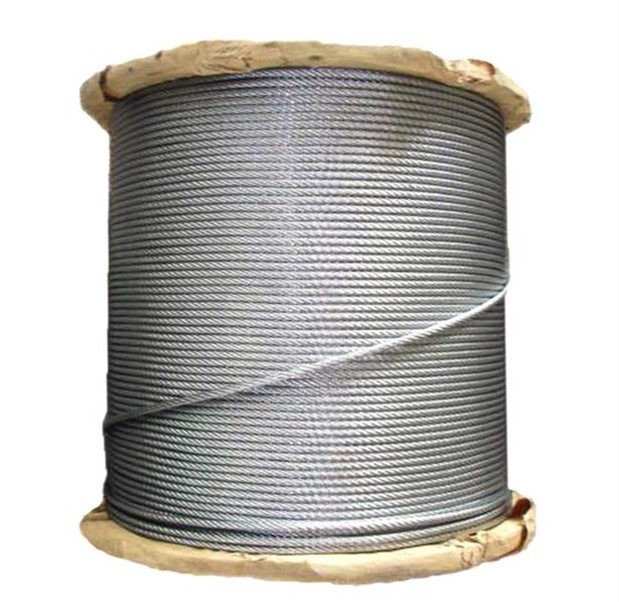

- Q: Is stainless steel wire resistant to galvanic corrosion?
- Yes, stainless steel wire is resistant to galvanic corrosion. Galvanic corrosion occurs when two different metals come into contact in the presence of an electrolyte, such as water or saltwater. The less noble metal in the pair corrodes while the more noble metal remains intact. Stainless steel is an alloy that contains chromium, which forms a passive oxide layer on its surface. This oxide layer acts as a barrier, protecting the stainless steel from galvanic corrosion. Additionally, stainless steel has a high resistance to corrosion in general, making it a suitable choice for applications where it may come into contact with different metals.
- Q: Is stainless steel wire resistant to saltwater?
- Yes, stainless steel wire is resistant to saltwater.
- Q: What are the different wire forms available for stainless steel wire?
- Stainless steel wire offers a variety of wire forms, each with its own unique characteristics and uses. 1. The most common form is round wire, available in different diameters. It finds application in general wire forming, jewelry making, and industrial uses. 2. Flat wire, as the name suggests, has a flat shape. It is ideal for applications requiring a wider and thinner profile, such as springs, clips, and electrical contacts. 3. Square wire offers additional strength and stability due to its square cross-sectional shape. It is commonly used in high-tensile applications like springs, fasteners, and mechanical components. 4. Shaped wire refers to stainless steel wire formed into specific shapes like triangles, rectangles, or hexagons. It is used in specialized applications like architectural facades, filtration systems, and decorative elements. 5. Braided wire consists of multiple strands woven together, creating a flexible and strong structure. It is commonly used in applications that require flexibility and conductivity, such as cables, hoses, and electrical grounding. 6. Welding wire is designed specifically for welding applications. It comes in different diameters and compositions to suit various welding processes and materials. It is widely used in automotive, construction, and manufacturing industries. In conclusion, the availability of different wire forms for stainless steel wire ensures that there is a suitable option for various needs in different industries, allowing for a wide range of applications.
- Q: Is stainless steel wire resistant to impact?
- Yes, stainless steel wire is generally resistant to impact. Stainless steel is known for its strength and durability, making it highly resistant to impact and able to withstand heavy loads or external forces without deformation or breaking. This resistance to impact makes stainless steel wire a popular choice for various applications, including construction, automotive, and industrial sectors where impact resistance is a crucial requirement. Additionally, stainless steel wire's resistance to impact is further enhanced by its ability to withstand extreme temperatures and corrosion, making it a reliable and long-lasting material in various environments.
- Q: Can stainless steel wire be used for making musical instruments?
- Musical instruments can indeed be crafted using stainless steel wire. Instrument makers often opt for stainless steel due to its impressive durability, strength, and corrosion resistance. This material is frequently employed in the production of strings for various instruments like guitars, pianos, and harps. Stainless steel strings generate a vibrant and clear sound, allowing them to suit a wide array of musical styles and genres. Moreover, thanks to its exceptional tensile strength and resistance to wear and tear, stainless steel wire can be utilized for other components of musical instruments, including frets, tuning pegs, and springs. Consequently, stainless steel wire proves to be a versatile substance capable of enhancing both the performance and longevity of musical instruments.
- Q: What are the tensile strength and yield strength of stainless steel wire?
- The specific grade or alloy of stainless steel being used can cause variations in the tensile strength and yield strength of stainless steel wire. Typically, stainless steel wire has a high tensile strength, which can range from 500 to 2000 megapascals (MPa), equivalent to 72,500 to 290,000 pounds per square inch (psi). This high tensile strength enables stainless steel wire to endure significant pulling or stretching forces without breaking. Conversely, the yield strength of stainless steel wire indicates the point at which it starts to permanently deform under a specific amount of stress. Generally, the yield strength of stainless steel wire is lower than its ultimate tensile strength and can range from 200 to 1500 MPa (29,000 to 217,500 psi). It is worth noting that factors like the manufacturing process, heat treatment, and specific alloy composition can further affect the tensile strength and yield strength of stainless steel wire. Therefore, it is crucial to refer to technical specifications or consult with manufacturers or suppliers to obtain accurate and specific information regarding the tensile and yield strength of a particular stainless steel wire.
- Q: Can stainless steel wire be used for wire rope winches?
- Yes, stainless steel wire can be used for wire rope winches. Stainless steel is a strong and durable material that is resistant to corrosion, making it suitable for outdoor and marine applications. It provides reliable strength and performance in winches, ensuring safe and efficient operation.
- Q: What are the different types of stainless steel wire fasteners?
- A variety of stainless steel wire fasteners can be found on the market, offering different options for various needs. Some commonly used types include: 1. Stainless steel screws: These fasteners have threads and are used to join objects together. They come in different lengths, diameters, and head styles to accommodate different applications. 2. Stainless steel bolts: Similar to screws, bolts are threaded fasteners, but they usually have a larger diameter and require a nut to secure the joint. They are commonly used in heavy-duty situations. 3. Stainless steel nuts: Nuts are used together with bolts to secure joints. They come in various shapes and sizes, such as hexagonal, square, and winged nuts. 4. Stainless steel washers: Washers are thin, flat metal discs used to evenly distribute load and protect the material's surface. They come in different sizes and shapes, including flat washers, lock washers, and fender washers. 5. Stainless steel rivets: Rivets are permanent fasteners inserted into materials, deforming the end to join them together. They are commonly used in industries like automotive, aerospace, and construction. 6. Stainless steel clips and clamps: Clips and clamps are used for securing or holding objects in place. They come in various designs, such as spring clips, hose clamps, and pipe clamps. 7. Stainless steel nails: Nails are pointed fasteners used in woodworking and construction to secure materials together. 8. Stainless steel pins: Pins are cylindrical fasteners used to hold components or align parts together. They come in different shapes, like dowel pins, cotter pins, and hitch pins. 9. Stainless steel hooks: Hooks are curved fasteners used for hanging or suspending objects. They are commonly used in applications such as hanging plants, tools, or decorative items. It should be noted that these examples are just a small selection of the stainless steel wire fasteners available. The specific choice of fastener will depend on factors like the application, load requirements, and environmental conditions.
- Q: Is stainless steel wire resistant to chemical exposure?
- Yes, stainless steel wire is highly resistant to chemical exposure. Stainless steel is known for its excellent corrosion resistance, making it suitable for various applications where it may come into contact with different chemicals. It has a protective oxide layer that forms on its surface, which helps prevent the wire from reacting with chemicals and corroding. This resistance to chemical exposure makes stainless steel wire a preferred choice in industries such as chemical processing, pharmaceuticals, food and beverage, and many others. However, it is important to note that the specific grade and composition of stainless steel can impact its resistance to certain chemicals, so it is crucial to select the appropriate stainless steel grade based on the type of chemical exposure it will encounter.
- Q: Can stainless steel wire be used for wire rope fences?
- Yes, stainless steel wire can be used for wire rope fences. Stainless steel wire is known for its strength, durability, and resistance to corrosion, making it an excellent choice for outdoor applications such as fences. Wire rope fences are typically used in areas where additional security and strength are required, such as industrial sites, farms, and high-security facilities. Stainless steel wire rope fences not only provide strength and security but also have an aesthetically pleasing appearance due to their sleek and modern design. Additionally, stainless steel wire rope fences require minimal maintenance, as they are resistant to rust and can withstand harsh weather conditions. Overall, stainless steel wire rope is a reliable and long-lasting material for constructing fences, ensuring the safety and protection of the surrounding area.
Send your message to us
Steel Wire Rod
- Loading Port:
- China Main Port
- Payment Terms:
- TT or LC
- Min Order Qty:
- 1 Ton m.t.
- Supply Capability:
- 2000 Tons Per Month m.t./month
OKorder Service Pledge
OKorder Financial Service
Similar products
Hot products
Hot Searches
Related keywords
